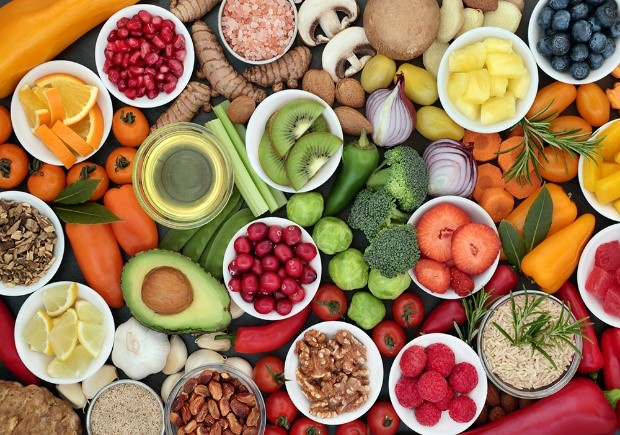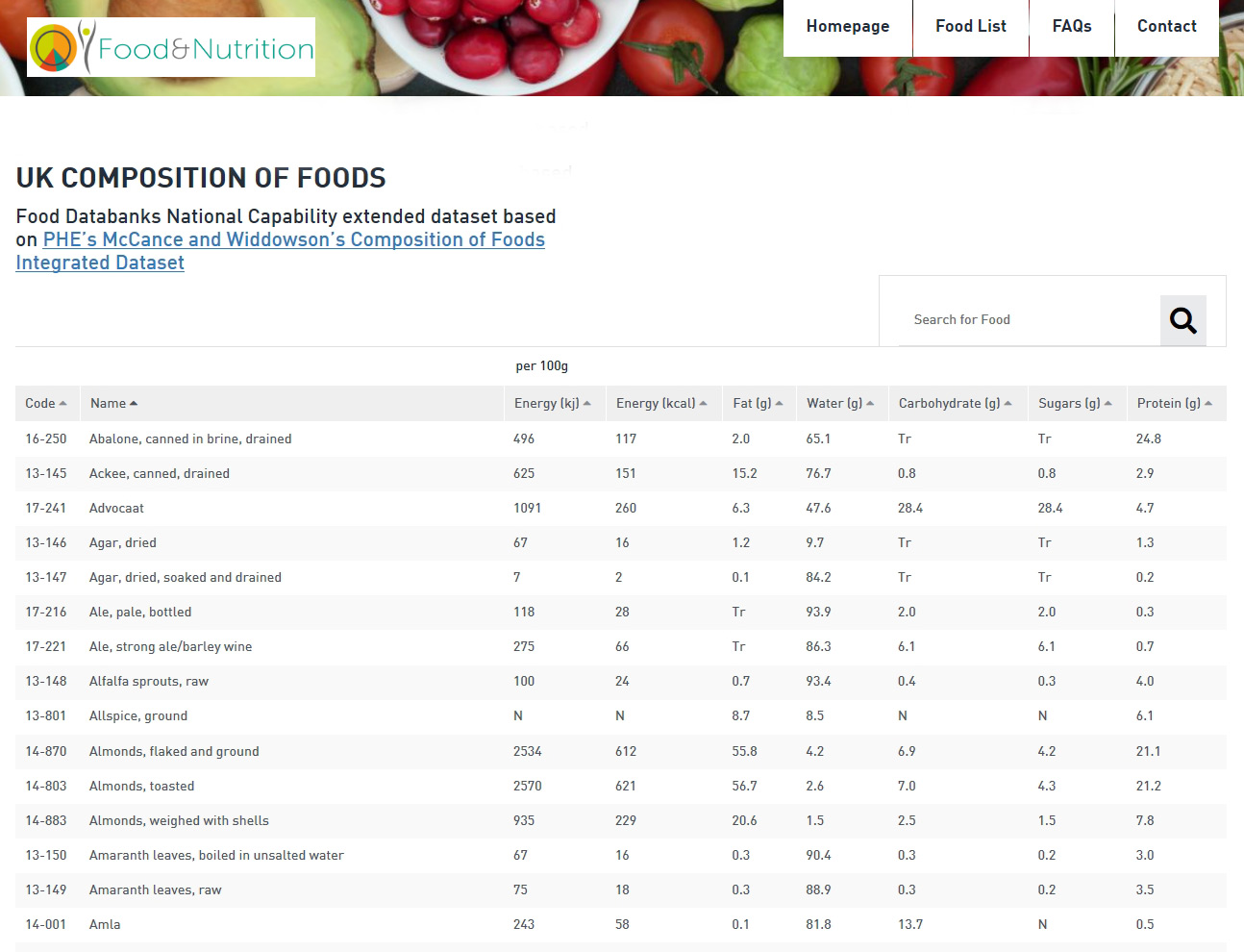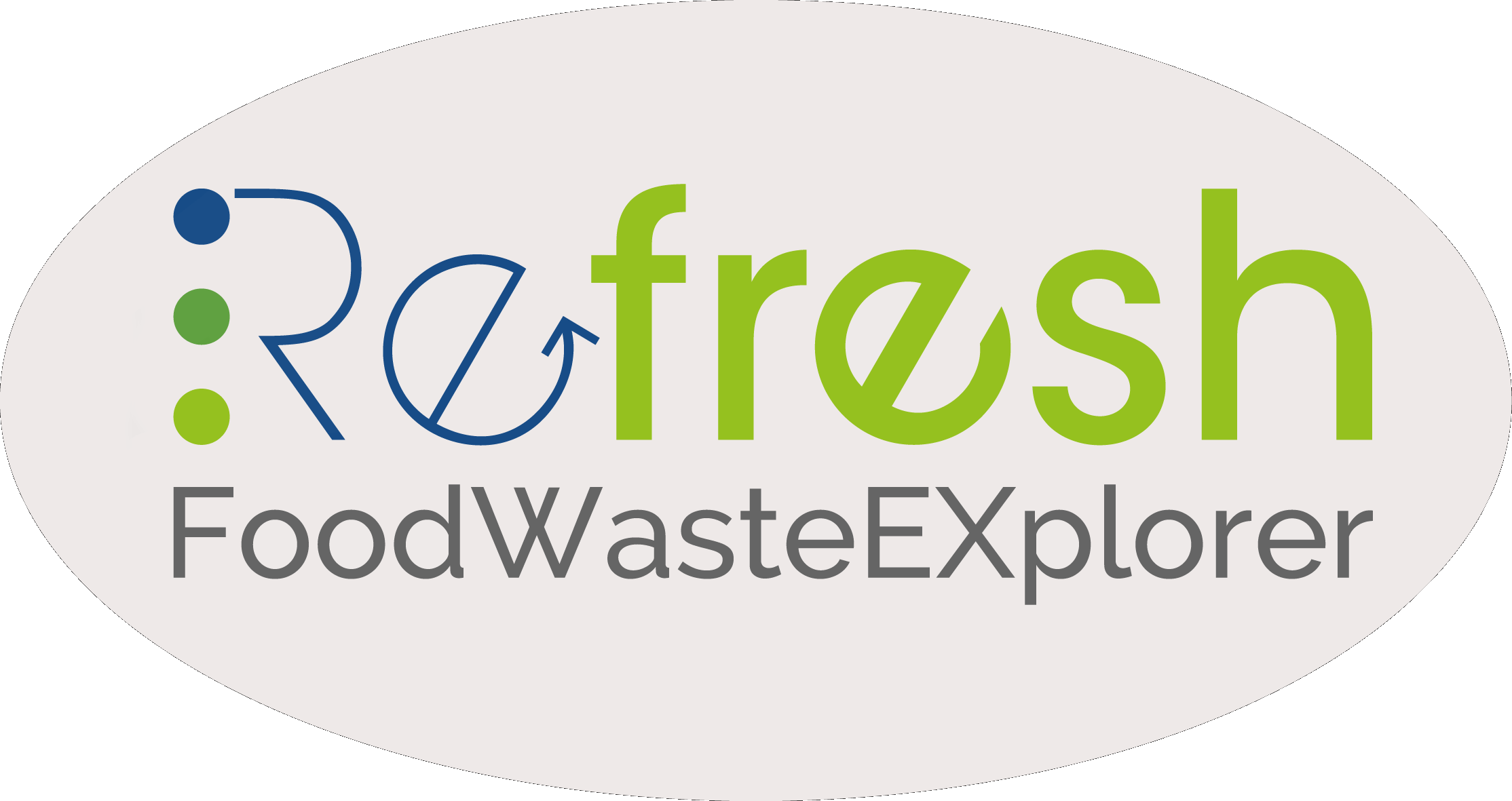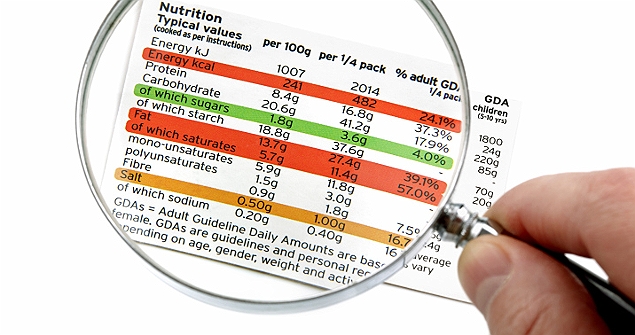Tools
eBASIS
eBASIS, (Bioactive Substances in Food Information System) (https://ebasis.eurofir.org), is a comprehensive database containing quality-evaluated scientific data, covering the composition of bioactive compounds present in foods.
COFID Dataset
The ‘Composition of Foods Integrated Dataset’ (CoFID) can be downloaded in excel format. It lists nutrient data for 2,887 foods, with a further 393 in the ‘old foods’ file. The data are divided across 13 worksheets, and include nutrient data for:
- macronutrients
- vitamins
- vitamin fractions
- minerals
- fatty acid fractions
- phytosterols
- organic acids
The searchable website for CoFID provides an easy access to nutritional information. The web tool allows users to enter search terms related to the food of interest and the website returns a list of relevant foods, showing the food code, name and key nutrient values (energy, fat, water, carbohydrates, sugars, protein). Clicking on an item from the list opens a detailed page for the food giving all the available nutrient values.
Food Waste Explorer
FoodWasteEXplorer is a tool for those exploring how food waste might be better used, e.g. citrus peel limonene can be used to make medical plastic.
Potentially, a fruit juice producer could use FoodWasteEXplorer to identify this and start the process towards alternative uses.
To develop FoodWasteEXplorer, some of the most common food products (120) (e.g. almonds) and their associated 1264 side streams (e.g. almond hulls) were identified.
Who’s it for?
FoodWasteEXplorer is free-of-charge for researchers, government agencies and industry including SMEs, and the general public.
Filters can be applied to retrieve selected subsets of data, such as side stream (e.g. peel, stalks, seeds) and component groups (e.g. vitamins, minerals), and search results can be exported for further offline analysis.
Contains ca. 27069 data points, representing 587 nutrients, 698 bioactives and 49 toxicants (collected from a variety of sources, including scientific papers and manufacturers’ data)
Services
Labelling for Food
Food composition data for labelling purposes
As indicated in the EU regulations (the provision of food information to consumers (Regulation (EU) No 1169/2011), most food companies have had to provide nutritional information on their pre-packed products since December 2016. We have created a labelling dataset to help food manufacturers, dietitians, nutritionists, software and app producers create the nutrition information for food products and recipes. It covers 2887 foods and ingredients from almonds and apples to yogurt and Yorkshire puddings, and is freely available to download
Nutritional Information Solutions
We also provide a service to calculate the nutritional content of food products for the UK food industry
For more information visit our ‘food labelling‘ section
Food Frequency Questionnaire for Dietary Intake
The Food Frequency Questionnaire (FFQ) was originally developed in the EUROGENE project to assess diet of participants across Europe and captures both habitual dietary intake and supplement intake, as reported [1,2].
At FN-NBRI we have adapted this to be UK-centric, by featuring foods relevant for the UK consumer and also using the CoFID (MacCance & Widdowson) data for the underlying nutritional analysis. Some of the features of the FFQ Studies Portal allow users to:
- create individual FFQ studies, add study-specific information in the welcome page (text and image), include study-specific questions to be captured from participants
- generate unique anonymised FFQ links for each participant, without including any personal participant information
- track progress of FFQ completion
- export analysed FFQ data in .csv format at the touch of a button. Export includes 38 nutrition related measurements as well as the calculated Healthy Eating Index (HEI), which is a feature of overall dietary quality
Please contact fn-nbri@quadram.ac.uk to gain access to the portal.
- Arkadianos I, Valdes AM, Marinos E, Florou A, Gill RD, Grimaldi KA: Improved weight management using genetic information to personalize a calorie controlled diet. Nutr J 2007, 6:29.
- Valavanis IK, Mougiakakou SG, Grimaldi KA, Nikita KS: A multifactorial analysis of obesity as CVD risk factor: use of neural network based methods in a nutrigenetics context. BMC Bioinformatics 2010, 11:453.












